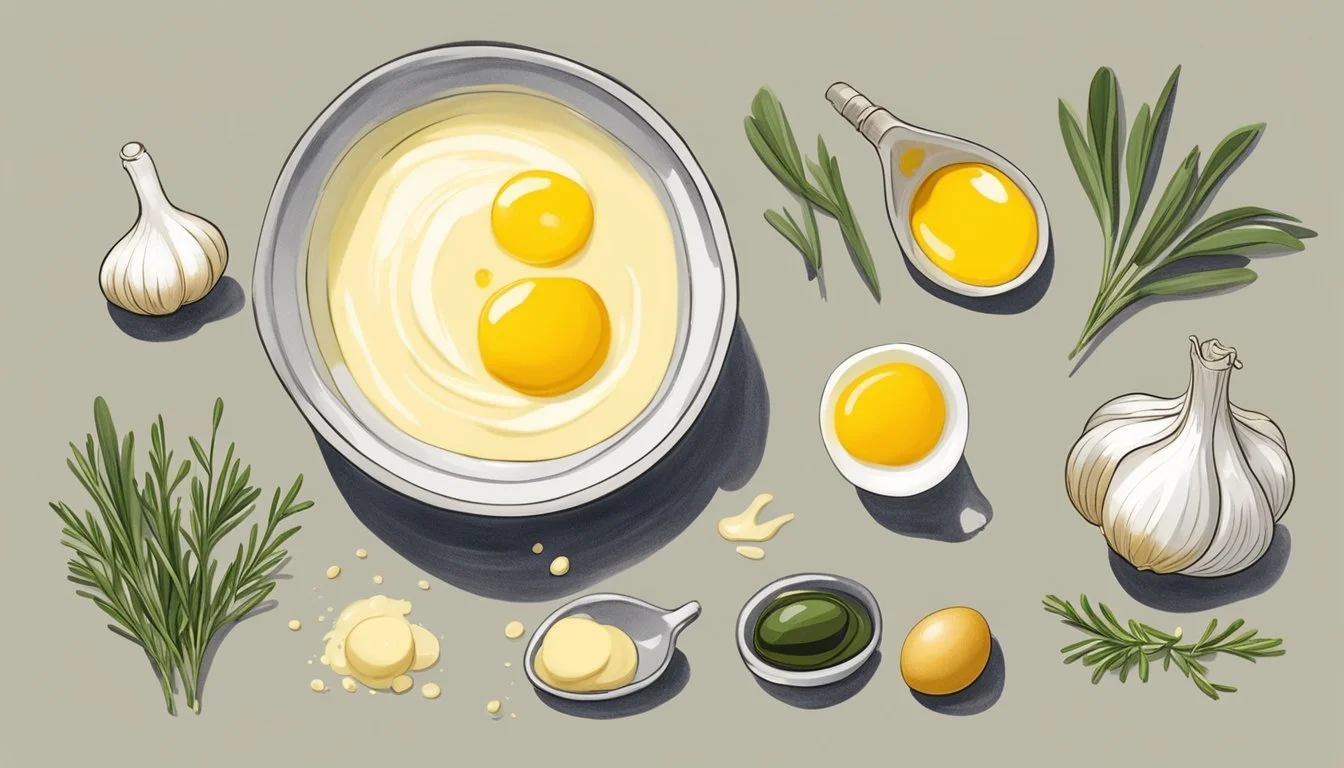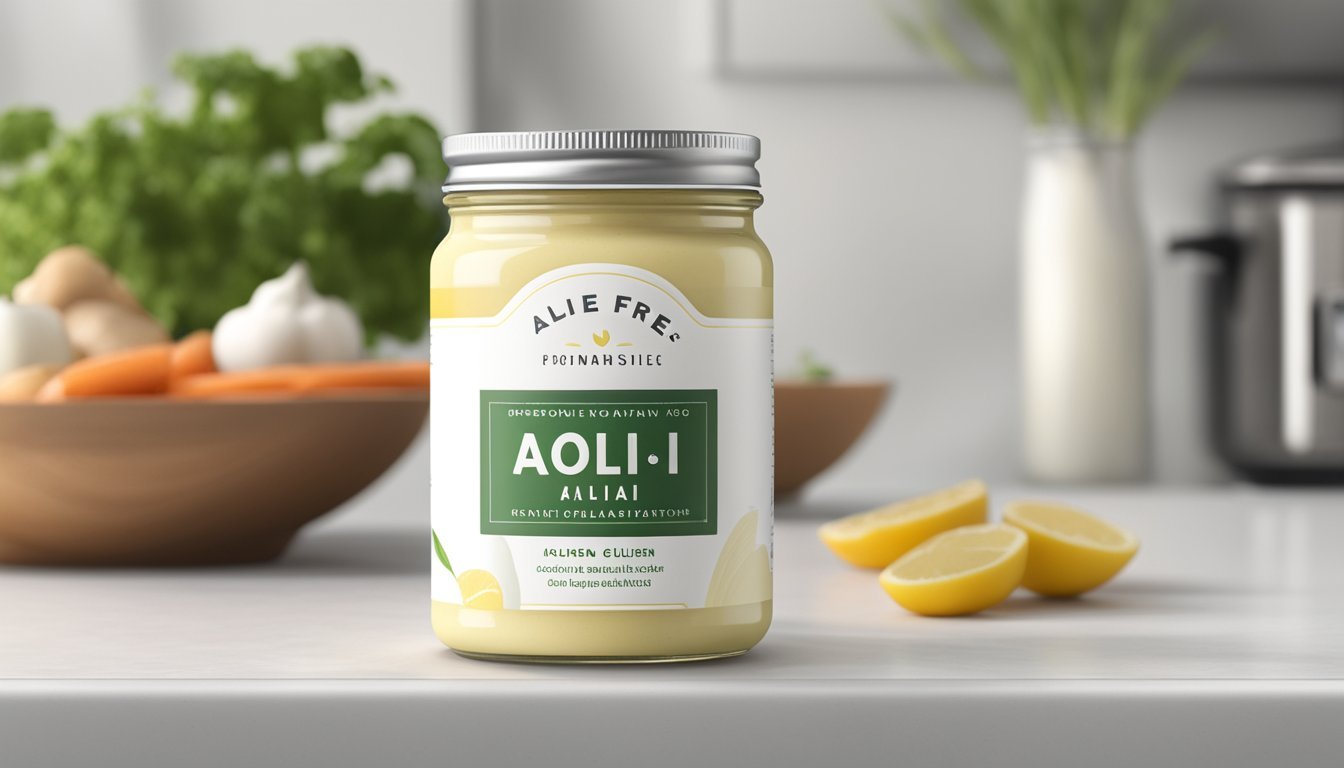Is Aioli Gluten-Free?
Unveiling the Truth About This Popular Condiment
Aioli traditionally is a simple Mediterranean sauce made from garlic, olive oil, lemon juice, egg yolks, and salt. Its creamy texture and rich flavor complement a variety of dishes, including vegetables, seafood, and meats. Due to its basic components, aioli is naturally gluten-free, making it a safe choice for individuals with celiac disease or gluten intolerance.
The rise in awareness of gluten-related health issues has led to an increase in the demand for gluten-free options. Aioli fits well into this category as it relies on ingredients that do not contain gluten. The absence of ingredients like wheat, barley, or rye ensures that aioli can be enjoyed without the concern of gluten exposure. However, it's essential for those with severe sensitivities to verify that all ingredients used are certified gluten-free to avoid the risk of cross-contamination.
Understanding Aioli
Aioli is traditionally known as a rich sauce that enhances the flavor profile of various dishes with its garlicky and creamy texture.
Aioli Origins and History
The origin of aioli can be traced back to the Mediterranean, specifically the Provence region of France and Spain, where it has been an integral part of the local cuisine for centuries. In Spain, known for its vibrant Spanish cuisine, aioli is often used to accent seafood and vegetable dishes, reflecting the region's culinary heritage.
Basic Ingredients of Aioli
The classic aioli sauce is composed of four fundamental ingredients:
Garlic: To infuse its distinct aroma and taste.
Egg yolk: Acts as an emulsifier.
Olive oil: Typically extra virgin olive oil for its quality and flavor.
Lemon juice or another acid: To balance the richness of the oil and add brightness to the sauce.
These components are combined through an emulsification process to create a smooth and creamy garlic aioli.
Variations of Aioli
While the traditional recipe is simple and uses minimal ingredients, there are numerous variations that incorporate additional flavors or adjustments:
Chipotle aioli: Incorporates chipotle peppers for a smoky, spicy twist.
Truffle aioli: Infused with truffle for an upscale, earthy flavor profile.
Variations may also arise from dietary preferences or regional influences, but at its core, aioli is a blend of garlic, oil, and an acid component, which caters to various tastes and dishes.
Is Aioli Gluten-Free?
When considering aioli's suitability for a gluten-free diet, it is important to assess the potential for gluten presence in its typical ingredients and the manufacturing process.
Understanding Gluten
Gluten refers to a group of proteins found in certain grains such as wheat, barley, and rye. It gives dough its elasticity and often contributes to the texture of baked goods. For individuals with celiac disease or gluten sensitivity, consuming gluten can lead to adverse health effects.
Common Gluten Sources in Condiments
Condiments may contain gluten from ingredients like wheat-based thickeners or from additives used for flavor and stability. For example, mayo typically is gluten-free, but varieties that use wheat-derived vinegar or add-ons can introduce gluten. Mustard and ketchup are often gluten-free, but one must double-check labels for any gluten-containing components or risk of cross-contamination.
Identifying Gluten-Free Aioli
Traditional aioli, a creamy sauce made from garlic and olive oil emulsified with egg yolks, is inherently gluten-free. Variations of aioli should be scrutinized: the presence of a certified gluten-free label indicates the product has been tested to meet strict standards for gluten content, offering assurance for those with celiac disease. It is also essential to look for claims addressing cross-contamination to ensure the aioli is truly safe for a gluten-free diet.
Making Homemade Aioli
Creating homemade aioli is straightforward and allows for a fresh and customizable condiment. With simple ingredients and the right equipment, anyone can prepare this versatile sauce to complement a variety of dishes.
Aioli Preparation Techniques
The basic recipe for aioli calls for combining fresh garlic and sea salt in a high-speed blender, followed by the addition of egg yolks and fresh lemon juice. It is critical to blend these ingredients until they are well-mixed before slowly drizzling in extra virgin olive oil or a neutral oil like canola or vegetable oil. This process emulsifies the mixture, transforming it into a creamy sauce.
Prep Time: Usually under 5 minutes
Total Time: Less than 10 minutes
Servings: Varies depending on the amount produced
To start, one should:
Place egg yolks, lemon juice, minced garlic, and salt in the blender.
Blend for 30 seconds to ensure the base ingredients are well combined.
Slowly add oil in a steady stream while the blender is running to achieve the emulsion.
Tips for Perfect Aioli
The key to perfect aioli lies in the emulsification process:
Begin by adding the oil slowly, drop by drop, to the mixture as it blends. This creates a stable foundation for the emulsion.
As the sauce thickens, one can increase the oil flow to a steady, thin stream until it is fully incorporated and the aioli has reached the desired consistency.
For flavor depth, the quality of extra virgin olive oil makes a significant difference. A neutral oil will result in a milder aioli, suitable for various palates.
Fresh lemon juice is preferable to bottled variants for a bright, zesty taste.
Always taste and adjust salt to preference after the aioli has come together.
By adhering to these techniques and tips, one can ensure their homemade aioli is gluten-free and tailor-made to their taste.
Aioli as a Culinary Staple
Aioli has carved out a niche for itself in the gastronomic world as a flavorful mayonnaise-based sauce, deeply integrated into various cuisines as a side, dipping sauce, or sandwich spread.
Serving Suggestions for Aioli
Crafted from mayonnaise, garlic, and lemon juice, aioli is typically served alongside a variety of dishes. It’s versatile enough to enhance the taste of:
Vegetables: Both raw and roasted vegetables are dipped into aioli for a flavor boost.
Seafood: Aioli complements the delicate flavors of seafood like grilled fish and shrimp.
Poultry: Grilled or roasted chicken (What wine goes well with roasted chicken?) finds a savory companion in aioli.
Potato Dishes: Fries and roasted potatoes alike are often paired with aioli.
Burgers and Sandwiches: A dollop of aioli can elevate the flavor profile of any burger or sandwich.
Pairing Aioli with Dishes
The beauty of aioli lies in its adaptability to accompany a range of dishes, adding a rich, garlicky dimension that complements the primary flavors. Notable pairings include:
Burgers: Aioli can replace traditional condiments, offering a creamy texture and robust taste.
Fries: Serving as a sophisticated alternative to ketchup, aioli enriches the simple pleasure of fried potatoes.
Grilled Fish and Chicken: The sauce adds a zesty, creamy finish to poultry and seafood.
Sandwiches: Used as a spread, aioli can tie together the various components of a sandwich with its tangy, savory notes.
Pasta: A small addition of aioli can provide a unique twist to pasta dishes, especially those featuring chicken or seafood.
Aioli's Dietary Considerations
Aioli, traditionally a Mediterranean sauce, has various adaptations to cater to different dietary needs. Its base ingredients may include items that are not gluten-free or vegan, prompting alternative recipes to accommodate such dietary restrictions.
Gluten-Free and Vegan Aioli Options
Gluten-free aioli is typically made without ingredients containing gluten, such as certain thickening agents found in some commercial brands. For a homemade gluten-free aioli, one can start with gluten-free mayonnaise or prepare the aioli using egg yolks, not to be confused with vegan options. Vegan aioli substitutes egg-based mayonnaise with plant-based alternatives such as vegan mayo, which can be made from aquafaba or soy. Both gluten-free and vegan versions incorporate lemon juice and freshly minced garlic, both of which are naturally free from gluten and animal products. Here is a basic outline for a gluten-free and dairy-free aioli recipe:
Ingredients:
Gluten-free egg-based or vegan mayonnaise
Lemon juice
Minced garlic
Salt to taste
Procedure:
Combine mayonnaise, lemon juice, garlic, and salt.
Mix until smooth.
Nutritional Information
Traditional aioli is calorie-dense due to its oil and mayonnaise content, with an average of 100 calories and 11 grams of fat per 13-gram serving. Generally, aioli contains minimal to no carbohydrates, protein, or sodium, unless additional ingredients are added. For example, a vegan aioli may have slightly different nutritional content based on the type of vegan mayo used. Below is a table that outlines the nutritional breakdown for aioli:
Nutrient Per 13g Serving Calories 100 Total Fat 11g Saturated Fat Depends on brand Trans Fat Depends on brand Cholesterol Depends on brand Sodium Minimal Total Carbohydrate 0g Dietary Fiber 0g Sugars Depends on brand Protein 0g
Note that the nutritional content of aioli can vary greatly depending on the specific recipe and the type of mayonnaise used. It's important for those looking to keep a strict diet to verify the ingredients and the nutritional label of the products being used.
Storage and Shelf Life
The storage method and the components of aioli greatly influence its shelf life. Aioli, like other emulsions, requires careful storage to preserve freshness and avoid spoilage.
Best Practices for Storing Aioli
When storing aioli, particularly those that are homemade or contain fresh ingredients like herbs or extra virgin olive oil, it's crucial to refrigerate them. Homemade aioli should be placed in an airtight container and stored in the refrigerator immediately after preparation. For commercial aioli such as Sir Kensington's, even though it may contain preservatives, it should be refrigerated after opening to maintain quality and extend shelf life.
Homemade Aioli:
Refrigerate in an airtight container.
Use fresh, high-quality ingredients like extra virgin olive oil for better stability.
Commercial Aioli (e.g., Sir Kensington’s):
Refrigerate after opening.
Follow the manufacturer's guidelines for optimal storage conditions.
Shelf Life of Homemade vs. Commercial Aioli
The shelf life of aioli can vary widely depending on whether it is homemade or commercially produced. Homemade aioli typically has a shorter shelf life because it lacks the preservatives found in store-bought versions. Generally, homemade aioli should be consumed within 3-5 days of preparation.
Commercial aioli products, on the other hand, often include preservatives that extend their shelf life. An unopened bottle of Sir Kensington's aioli, for example, can typically last well past its printed expiration date if stored properly in a cool and dark place. Once opened and refrigerated, it should be used within a month for best quality.
Homemade Aioli:
Consume within 3-5 days.
No preservatives, so shorter shelf life.
Commercial Aioli (e.g., Sir Kensington’s):
Unopened: Check expiration date, can last beyond if properly stored.
Opened: Best if used within a month once refrigerated.
Addressing Cross-Contamination Risks
When preparing aioli in an environment where gluten-containing products are also handled, cross-contamination is a critical concern. To ensure aioli maintains its gluten-free integrity, certain protocols must be diligently followed. This is especially crucial for individuals with celiac disease or gluten sensitivity, where even trace amounts of gluten can trigger adverse reactions.
Firstly, utensils and surfaces must be thoroughly cleaned before use. A study highlights that washing pots and pans with detergent and warm water can effectively remove gluten residues. However, shared equipment such as blenders or food processors may require more meticulous cleaning or dedicated gluten-free tools.
Secondly, ingredient storage and handling is vital. Gluten-free ingredients should be stored separately from gluten-containing items to prevent accidental mixing. Kitchen staff should be trained to always check labels and to handle gluten-free items with clean gloves.
Thirdly, communication plays a pivotal role. Food service providers are encouraged to provide clear allergen information and to educate their staff about the importance of preventing cross-contamination. Patrons with celiac disease are recommended to proactively inquire about food preparation practices.
Below is a simplified checklist to reduce cross-contamination risk:
Clean: Ensure all surfaces and utensils are thoroughly cleaned.
Separate: Store gluten-free ingredients away from gluten-containing products.
Educate: Train staff on the importance of gluten-free requirements.
Communicate: Provide clear allergen information and encourage customer queries.
Implementing these measures can aid in maintaining aioli as a safe, gluten-free option for those requiring strict adherence to a gluten-free diet.





